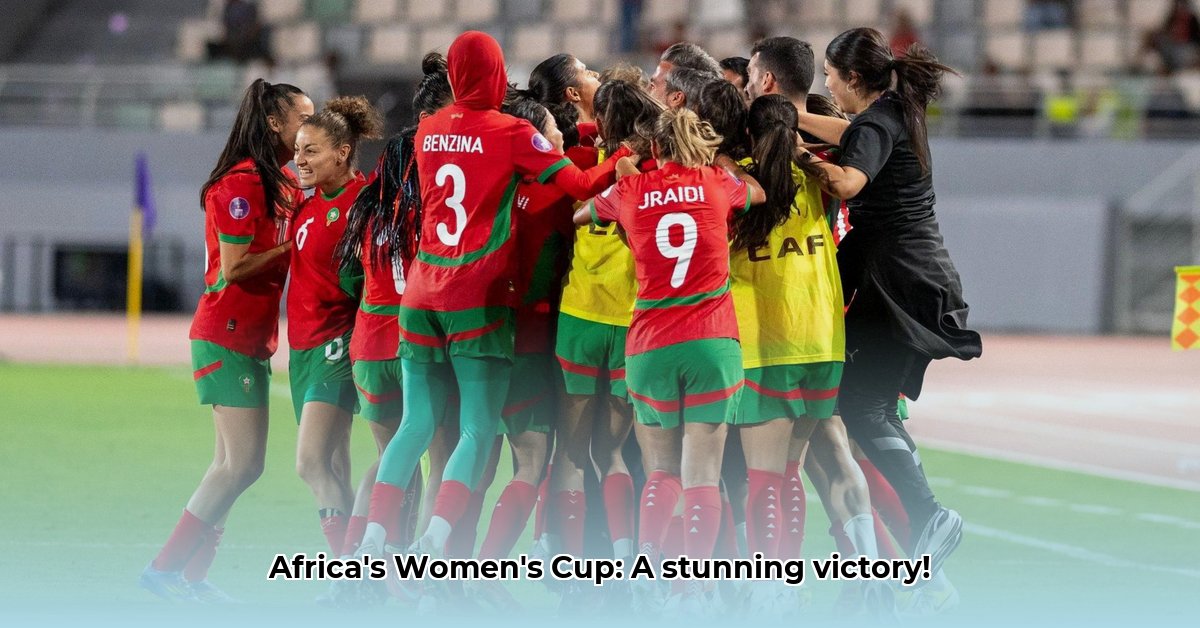
From Humble Beginnings to Continental Powerhouse
The Women's Africa Cup of Nations (WAFCON), a cornerstone of women's football on the continent, has undergone a remarkable transformation. From its relatively modest beginnings, marked by inconsistent participation and limited resources, WAFCON has blossomed into a fiercely competitive tournament attracting massive crowds and significant media attention. The journey, however, has been far from straightforward, marked by both triumph and tribulation. This is the story of WAFCON's evolution, its enduring challenges, and its exciting future.
How did a tournament once battling for survival become a continental spectacle? The answer lies in a confluence of factors — increased investment, heightened global visibility, and the emergence of new powerhouses challenging established dominance.
The Power of Investment: More Than Just Money
One of the most significant catalysts for WAFCON's growth has been the substantial increase in prize money. This isn't simply about financial reward; it's a powerful statement recognizing the value of women's football. This injection of capital has a ripple effect, encouraging national football associations to invest more heavily in their women's teams, attracting sponsors, and ultimately raising the overall standard of play. The increased professionalism is palpable, transforming the tournament into a far more competitive and engaging spectacle.
Has this financial boost been enough to truly change the game? While the substantial rise in prize money (a 45% increase, for instance, in recent years) has undeniably helped, it needs to be consistent across the board. Uneven distribution of funds still remains a significant issue.
A Shift in Power Dynamics: New Stars, New Contenders
For years, Nigeria reigned supreme, amassing an impressive eleven titles. This dominance speaks volumes about their talent and legacy. However, the landscape is changing. Countries like South Africa, Equatorial Guinea, and Morocco are steadily closing the gap, making WAFCON a far more unpredictable and exciting competition. Morocco's stunning victory on home soil in 2022, followed by their qualification for the FIFA Women's World Cup, serves as a powerful symbol of this shift. This victory not only celebrated Moroccan success but also highlighted the rising competitiveness across the continent. It's no longer a competition dominated by a single nation – it is a truly continental rivalry.
But are these new stars sustainable? While this changing competitive landscape shows positive signs, sustained investment and infrastructure improvements in these emerging nations are crucial to ensuring their continued success.
The Road Ahead: Navigating Challenges and Embracing Opportunities
Despite the phenomenal progress, challenges persist. Inconsistent tournament scheduling, often clashing with other major sporting events like the Olympics, continues to be an issue. This inconsistent scheduling hinders the tournament’s ability to build momentum and attract a wider audience. Furthermore, the development of women's football remains uneven across the continent. Some nations boast well-funded leagues and superior infrastructure, while others struggle to provide basic training facilities and coaching programs.
What are the biggest obstacles impeding sustained growth? A lack of consistent funding, poor infrastructure in many countries, and unequal access to resources remain crucial hurdles which need addressing.
Strengthening the Foundation: A Collaborative Approach
To ensure WAFCON's continued success and growth, a concerted effort from multiple stakeholders is vital. This requires a holistic approach focusing on several key areas:
1. Consistent Funding and Investment: CAF (Confederation of African Football) must ensure consistent funding and support. National football federations need to secure reliable financial resources from both government and private sectors to remove the yearly scramble for funding.
2. Infrastructure Development: Investment in high-quality training facilities, equipment, and better coaching development programs is crucial, particularly across the continent where access to resources remains uneven.
3. Enhanced Media Coverage and Sponsorship: Increased media attention is essential to boost WAFCON's profile, attract sponsors, and create more opportunities for exposure and investment.
4. Addressing Systemic Issues: This includes tackling persistent pay disputes, ensuring fair compensation for players, and promoting greater equality within the football ecosystem.
5. Grassroots Development: Investing in youth programs, and reaching out to girls in more remote areas, is crucial for building a sustainable future for women’s football in Africa.
The Women's Africa Cup of Nations has already come a long way. With continued investment, strategic planning, and a collaborative spirit, its future is brighter than ever. It is more than a football tournament; it is an emblem of progress, a symbol of empowerment, and a powerful catalyst for change across the African continent. The potential is there; all it needs is the dedication to reach its full potential.